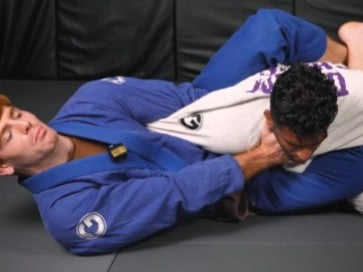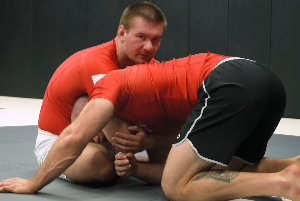Written by Alanna Kate Derrick, certified Personal Trainer and Sports Nutrition Coach.
Published on February 2nd, 2023
To perform at your best in Brazilian Jiu Jitsu, you'll need to do more for your fitness than just attend training classes and open mats. Jiu Jitsu is physically demanding, and strength and flexibility are of the utmost importance. Not only will training your entire body help improve your performance on the mat, but it will also help to reduce your risk of injury. Read on for tips to help you get the most out of your cross-training sessions.
Strength Training Goals for Jiu Jitsu Practitioners
One of the most fascinating aspects of Jiu Jitsu is that smaller fighters can often best much larger opponents through technique rather than brute strength. Of course, that isn't to say strength isn't important. Many moves require you to grab onto and hold your opponent or push to break free from chokes and holds, and the stronger you are, the easier it will be for you to execute these techniques.
If you think back to your first Jiu Jitsu class, you probably recall how sore your entire body felt afterward, as Jiu Jitsu really is a full-body sport.
While it is important to work on strengthening your entire body to avoid creating any muscular imbalances and compensations, there are certain areas you should target to see the greatest benefits on the mat.
Legs and Glutes
Your hamstrings and inner thigh muscles take on a lot of work when using your hooks or holding an opponent in closed guard. You'll also feel the strain in your legs and glutes when shrimping or doing moves involving a bridge. Practicing bridges in your training sessions can help strengthen these muscles while also allowing you to perfect the move so you can use it during rolls.
On your back with your feet planted near your seat, press through your heels to lift your hips and back off the ground, leaving only your feet and shoulders on the floor. Lower down slowly and with control. To get more of a challenge, try doing the move with only one leg at a time, extending the other straight out. This will also ensure you strengthen your legs evenly and that one isn't compensating for weakness in the other. It challenges your balance and adds an element of core strengthening as well. You can also add weight to the move by holding a weight plate or dumbbell across your hips.
Chest, Triceps, and Back
You'll need strength in your upper body for various chokes and holds, and the humble pushup is one of the best moves you can do to target this area. Lower down slowly until your chest is in line with your elbows, then press back up.
Experiment with different variations (hands wide or in a diamond shape, one-armed, or adding a clap between reps) to challenge your muscles even further.
In addition to targeting your upper body, pushups come with the added bonus of strengthening your core as well, which is essential to balance, posture, and stability during rolls, workouts, and your daily life.
Grip Strength
Whether grabbing onto your opponent's gi or body, grip strength is hugely important for Jiu Jitsu. The farmer's carry is a great move for targeting your grip. Carry a heavy weight in each hand as you walk, focusing on maintaining a straight, upright posture. For added core strengthening, carry the weight in just one hand at a time. You can also curl light dumbbells from your fingertips to your wrist. Keeping a stress ball handy at your desk or in your pocket or purse gives you access to convenient, on-the-go grip strengthening. Give it a few squeezes with each hand here and there throughout the day.
Incorporate Plyometrics for Explosive Power
Getting stronger is all well and good, but you also need to be able to use that strength quickly and forcefully, especially when trying to break out of a hold or jump to your feet during a roll. Plyometric exercises target the fast-twitch muscle fibers responsible for quick, short bursts of movement, as opposed to slow-twitch fibers, which come into play for muscular endurance. Squat jumps, medicine ball throws, and clap pushups help build the force you'll need to break holds or flip your opponent.
Stretch Muscles for Improved Range of Motion
When you strengthen your muscles, you are also tightening and shortening their fibers, so it is important to balance out your strength training sessions with plenty of stretching. Ideally, you should be stretching your entire body to minimize imbalances, but for Jiu Jitsu specifically, you'll want to pay special attention to your hips, inner thighs, and hamstrings. Increased range of motion in these areas will make it easier for you to get your hooks in when your opponent is in various positions and can also help you avoid tapping out prematurely due to muscle strain.
One area where flexibility is often overlooked is in your toes and feet. When in kneeling positions in Jiu Jitsu, you'll want to keep your toes tucked under rather than flattening the tops of your feet to the mat. This way, you'll be better able to respond to your opponent's movements and jump up quickly when needed during a roll.
Pedal through your feet in a pushup or plank position to keep your feet and toes limber, or pull back on your toes with your hands while in a seated position. Roll your ankles in both directions to loosen any tightness, or point your feet to trace through the letters of the alphabet.
Yoga is a fantastic addition to Jiu Jitsu training regimens because it incorporates strength, flexibility, and balance, all of which are essential during rolls. Not only that, but yoga also helps you connect with your breath, keeping it smooth and even throughout the session. This can greatly benefit you on the mat, helping you stay calm and centered as you plan your next move.



